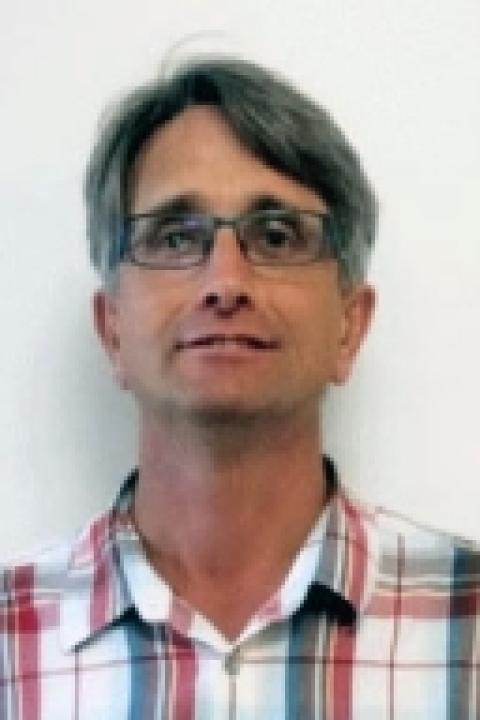
John Hughes Clarke
Ph.D. Dalhousie University, 1988
Research Expertise
Dr. Hughes Clarke's primary fascination is with marine sediment transport, particularly in deep water. His original exposure to swath sonar systems was in 1984 looking at the record of the 1929 turbidity current. Since that time he has increasingly focused on the information content available from those systems.
Courses Taught
- ESCI 759/859: Geological Oceanography
- ESCI 868: Oceanography for Hydrography
- ESCI 869: Marine Geosci for Hydrography
- ESCI 896: Top/Geol Oce Hydro Surveyors
- ESCI/OE 874: Seabed Mapping
- OE 999: Doctoral Research
Education
- Ph.D., Oceanography(Chem.&Physical), Dalhousie University
- M.S., Oceanography(Chem.&Physical), Southampton University
- B.A., Geology/Earth Science, Oxford Univ-Eng
Selected Publications
Normandeau, A., MacKillop, K., Macquarrie, M., Richards, C., Bourgault, D., Campbell, D. C., . . . Clarke, J. H. (2021). Submarine landslides triggered by iceberg collision with the seafloor. NATURE GEOSCIENCE, 14(8), 599-+. doi:10.1038/s41561-021-00767-4
Hay, A. E., Hatcher, M. G., & Hughes Clarke, J. E. (2021). Underwater noise from submarine turbidity currents.. JASA Express Lett, 1(7), 070801. doi:10.1121/10.0005668
Englert, R. G., Hubbard, S. M., Cartigny, M. J. B., Clare, M. A., Coutts, D. S., Hage, S., . . . Vendettuoli, D. (2021). Quantifying the three-dimensional stratigraphic expression of cyclic steps by integrating seafloor and deep-water outcrop observations. SEDIMENTOLOGY, 68(4), 1465-1501. doi:10.1111/sed.12772
Heijnen, M. S., Clare, M. A., Cartigny, M. J. B., Talling, P. J., Hage, S., Lintern, D. G., . . . Hughes Clarke, J. E. (2020). Rapidly-migrating and internally-generated knickpoints can control submarine channel evolution.. Nat Commun, 11(1), 3129. doi:10.1038/s41467-020-16861-x
Clare, M., Lintern, D. G., Rosenberger, K., Clarke, J. E. H., Paull, C., Gwiazda, R., . . . Apprioual, R. (2020). Lessons learned from the monitoring of turbidity currents and guidance for future platform designs. SUBAQUEOUS MASS MOVEMENTS AND THEIR CONSEQUENCES: ADVANCES IN PROCESS UNDERSTANDING, MONITORING AND HAZARD ASSESSMENTS, 500, 605-634. doi:10.1144/SP500-2019-173
Clarke, J. E. H. (2016). First wide-angle view of channelized turbidity currents links migrating cyclic steps to flow characteristics. NATURE COMMUNICATIONS, 7. doi:10.1038/ncomms11896
Goff, J. A., Swift, D. J. P., Duncan, C. S., Mayer, L. A., & Hughes-Clarke, J. (1999). High-resolution swath sonar investigation of sand ridge, dune and ribbon morphology in the offshore environment of the New Jersey margin. MARINE GEOLOGY, 161(2-4), 307-337. doi:10.1016/S0025-3227(99)00073-0
Clarke, J. E. H., Mayer, L. A., & Wells, D. E. (1996). Shallow-water imaging multibeam sonars: A new tool for investigating seafloor processes in the coastal zone and on the continental shelf. MARINE GEOPHYSICAL RESEARCHES, 18(6), 607-629. Retrieved from https://www.webofscience.com/
CLARKE, J. E. H., SHOR, A. N., PIPER, D. J. W., & MAYER, L. A. (1990). LARGE-SCALE CURRENT-INDUCED EROSION AND DEPOSITION IN THE PATH OF THE 1929 GRAND-BANKS TURBIDITY-CURRENT. SEDIMENTOLOGY, 37(4), 613-629. doi:10.1111/j.1365-3091.1990.tb00625.x
Piper, D. J. W., Shor, A. N., & Hughes Clarke, J. E. (1988). The 1929 “Grand Banks” earthquake, slump, and turbidity current. In Sedimentologic Consequences of Convulsive Geologic Events (Vol. 229, pp. 77-92). doi:10.1130/spe229-p77